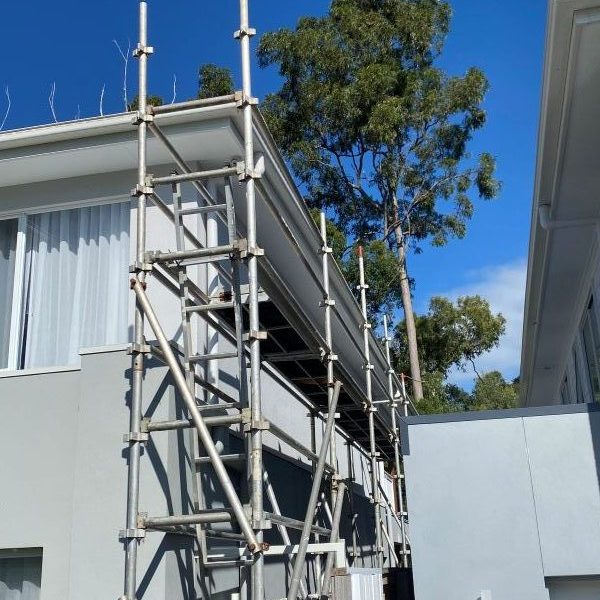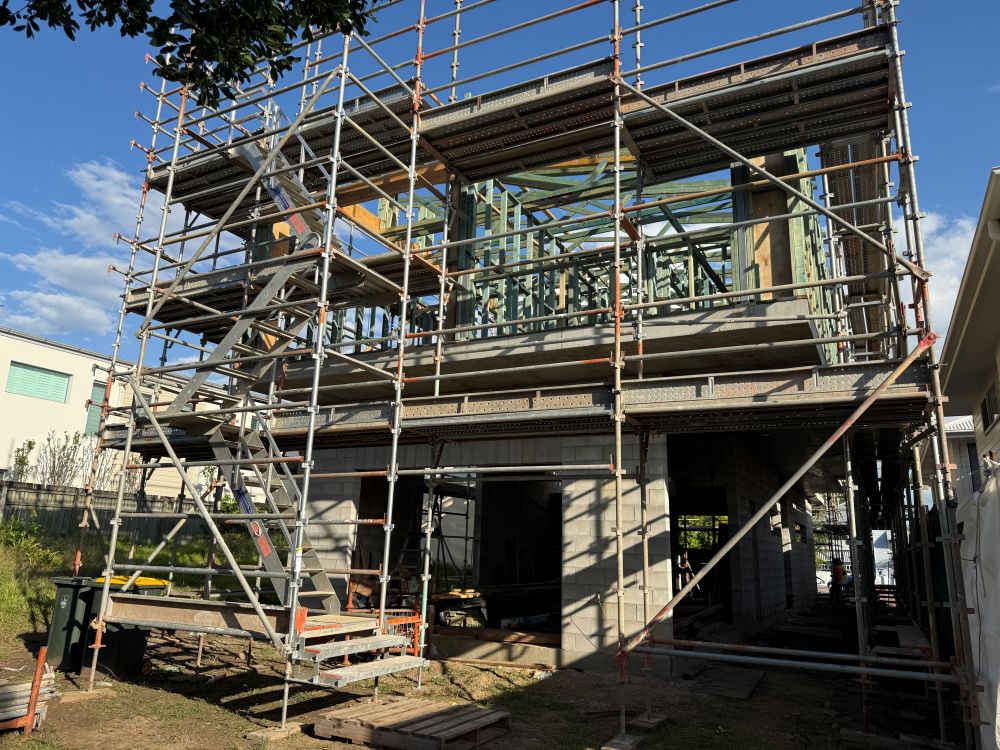Enhancing Scaffold Load Capacity: Essential Insights for Safety and Compliance in the Construction Industry
The concept of scaffold load capacity is vital for ensuring the safety and stability of scaffolding during construction activities. It defines the maximum weight that a scaffold can safely support and encompasses three major categories of loads that must be meticulously assessed:
- The weight of the scaffold itself, commonly referred to as the dead load, which includes all the structural components of the scaffold.
- The weight of workers, tools, and materials positioned on the scaffold, known as the live load, which can fluctuate based on the workforce and materials used.
- External forces, such as wind, rain, or vibrations, which act upon the structure and are classified as environmental load, potentially impacting the scaffold's integrity.
Grasping these loads is crucial because they directly influence the overall stress exerted on a scaffold during its operational phase. Adherence to these calculations is not merely recommended; it is mandated by Australian law to ensure the safety of all personnel involved in construction projects, thereby reducing the risk of accidents and legal repercussions.

Effective Utilisation of Our Scaffold Load and Height Calculator: A Comprehensive Guide
Although a universal formula does not exist for every scaffold configuration, our scaffold calculator offers a user-friendly interface that simplifies the process of obtaining accurate estimates by considering key variables. This tool is specifically designed for residential builders, homeowners, and scaffold hire professionals who adhere to the guidelines established by Australian OHS standards.
Step 1: Identify the Type of Work
Begin by specifying the nature of the work, which may include activities such as roof restoration, exterior painting, solar panel installation, cladding, or rendering. Understanding the specific requirements of each task is essential for accurate calculations.
Step 2: Specify the Number of Workers
For instance, you may enter two workers who will be working simultaneously on the scaffold platform, as the combined weight of the workers is crucial for load calculations.
Step 3: Estimate the Weight of Materials
This could involve estimating approximately 120 kg worth of rendering materials or tools that will be utilised throughout the project, ensuring that all materials are accounted for in the load calculations.
Step 4: Enter the Height of the Platform
For example, the height could be set at 4.5 metres above ground level, as it plays a significant role in determining the scaffold's stability and compliance with safety regulations.
Once you input this information, the calculator will generate a recommended scaffold configuration that includes:
- The appropriate duty class (e.g., Light, Medium, or Heavy) based on the load requirements.
- An estimation of the Safe Working Load (SWL) per bay, which is essential for ensuring safety during operations.
- The recommended scaffold type (e.g., aluminium tower or steel frame), tailored to the specific project needs.
- Necessary safety features required, such as guardrails, soleplates, and stabilisers, to enhance safety.
- Any compliance triggers related to height, such as tie-offs needed above 4 metres, ensuring adherence to safety protocols.
Understanding the Absence of a Universal Load Formula for Scaffolding
While the scaffold calculator serves as a valuable tool for making estimates, scaffolders and engineers recognise that they cannot rely solely on a single formula. This is due to several significant factors:
- Scaffold systems can differ substantially based on materials and designs, including aluminium, steel, modular, and tube-and-coupler systems.
- The intended use impacts the load capacity considerably (for example, painting versus masonry work), necessitating different assessments.
- Variations in platform strength and component ratings provided by different manufacturers can lead to discrepancies in load calculations.
Industry Standard Approach for Calculating Safe Working Load (SWL)
Professionals often refer to the following formula as a foundational reference for estimating the load capacity:
Safe Working Load (SWL) per bay = (Platform Load Rating × Safety Factor) – Scaffold Component Weight
Illustrative Example:
- A platform rated for a maximum load of 600 kg, providing a standard for assessment.
- Applying a 4:1 safety margin: using only 25% of the rating results in a 150 kg limit for safer operations.
- Subtracting the weight of the scaffold structure, which is estimated at 100 kg, to account for all components.
- The resulting usable working load is 50 kg, representing a conservative estimate that typically does not reflect actual planning.
Given the complexities inherent in real-world conditions, professional scaffolders generally adhere to manufacturer guidelines, engineering tables, and local codes instead of relying solely on this simplified formula, ensuring comprehensive safety and compliance.

Essential Best Practices Employed by Professionals in Scaffold Evaluations
Professional scaffold evaluations typically encompass several critical components to ensure safety and compliance:
- Reviewing manufacturer load data and verified span ratings for accuracy, which establishes a solid foundation for assessments.
- Calculating the total live, dead, and environmental loads to ensure the overall safety of the scaffold setup.
- Ensuring compliance with AS/NZS duty class specifications, which meet industry standards and regulations.
- Obtaining engineering sign-off for any custom or elevated scaffold setups, ensuring all modifications are officially approved.
- Conducting thorough visual and structural inspections prior to scaffold use to identify any potential hazards or weaknesses in the structure.
Adapting Scaffold Practices to Environmental Conditions and Site-Specific Factors
Addressing Wind Exposure in Coastal Queensland
In areas classified under wind zones N3 and N4, the lateral forces impacting scaffolds are considerably increased. Consequently, scaffolds must be secured at shorter intervals, and additional bracing or shade cloth may be necessary, especially during high-wind seasons, to ensure structural stability and safety.
Considerations for Soil and Ground Types
When confronting unstable or sloped soil conditions, it is crucial to employ soleplates and adjustable base jacks to enhance the scaffold's overall stability. Moreover, locations with varying elevations may necessitate the implementation of levelled bay systems to maintain a safe and secure working environment for all personnel involved.
Regulations for Work Above Four Metres
In Queensland, any platform exceeding four metres in height requires thorough inspection and certification. A scaffold handover certificate is mandated under the Work Health and Safety Regulation 2011, thereby ensuring compliance with established safety standards and practices.
Vital Safety Regulations to Follow for Scaffold Operations
- Work Health and Safety Regulation 2011 (QLD), which outlines essential safety protocols.
- Managing the Risk of Falls at Workplaces (Code of Practice, 2021), providing guidelines for fall prevention.
- AS/NZS 1576 and AS/NZS 4576 Standards for scaffold safety, which set the benchmark for safe practices.
- High Risk Work Licence (HRWL) is a prerequisite for any scaffold setup exceeding four metres in height, ensuring only qualified personnel perform the work.
It is the responsibility of site supervisors to conduct regular inspections, particularly after adverse weather events or when there are significant changes to scaffold height or load, ensuring ongoing adherence to safety regulations and compliance with industry standards.
In-Depth Case Study: Scaffold Application in Robina
In a recent project located in Gold Coast, a homeowner in Robina required scaffolding for the purpose of repainting and rendering a two-storey exterior wall. The working height for this undertaking was established at five metres, and two tradespeople utilised approximately 200 kg of rendering materials and tools throughout the project.
Employing our scaffold calculator, the recommended configuration was as follows:
- Scaffold class: Medium Duty, deemed suitable for the specific task at hand.
- System type: Steel frame with timber planks, selected for their durability and strength.
- Additional safety measures: Full edge protection, soleplates for soft earth conditions, and wind mesh to mitigate exposure to wind forces.
The scaffold successfully passed all required inspections and adhered to Queensland’s OHS regulations, resulting in no downtime throughout the duration of the project, showcasing the importance of thorough planning and adherence to safety standards.
Crucial Considerations for Scaffold Height and Load Capacity Calculations
Determining scaffold height and load capacity must never be treated lightly or as mere guesswork. In residential projects, this meticulous process is vital for ensuring safety, managing costs effectively, and achieving compliance with local regulations.
Given the specific requirements that are applicable to Australian conditions, particularly in southeast Queensland, we strongly advise obtaining an accurate scaffolding quote and ensuring that all installations are carried out by trained professionals with the necessary expertise.
Reach Out to CanDo Scaffolding Hire for Expert Advice and Services
For further information regarding our extensive range of services, please do not hesitate to contact us at 1300 226 336 or send an email to theguys@cando.com.au at your convenience.
We offer a comprehensive selection of scaffolding solutions, including void protection platforms and roof edge protection, customised to meet the unique needs of any residential or light commercial construction project, ensuring your work environment is safe and compliant.
Understanding Scaffold Load Capacity for Residential Projects
The Article: Scaffold Load Capacity Insights for Residential Projects first appeared on https://writebuff.com
The Article Scaffold Load Capacity for Residential Construction Projects Was Found On https://limitsofstrategy.com
